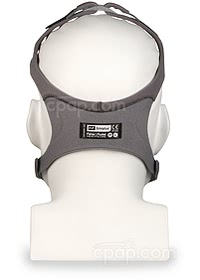robysue wrote:So why have the mask setting in the first place? If the mask setting is not used for leak calculations, then what *is* it used for?
the same thing that humidifier presence, tubing size and length, antibacterial presence is used for. getting more accurate pressure delivery at the mask/person interface.
resmed does that, respironics copied it with their 'system one resistance settings' which is well documented.
resistances to airflow (humidifier, tubing, AB filter, and mask type) all affect the end pressure at the mask as a person breaths in and out.
by modeling the varying resistance to flow that the different components introduce, the machine can compensate by altering the flow profile in the blower to achieve more accurate pressure delivery.
I've measured pressure at the back of my machine, through an AB filter and 3 meters of hose, and compared that pressure to the pressure at the mask. my pressure settings at the time were 18/13 bilevel. with normal respiration, the pressure at the mask was pretty accurate swinging from around 13 up to around 18 on each inhalation. but the pressure at the machine was going from about 13 to 21cm peak. when I tried *big deep breaths* the pressure at the machine would spike up around 28cm, and still only around 18 at the mask.
if you look at the specs in the back of a bunch of resmed manuals, you'll see that the FFM have a slightly lower resistance value than nasal masks, though generally not much, and the pillow masks have even higher resistance than the nasal masks, (because the openings are smaller in the pillows... smaller openings, more resistance, thus requiring higher flow to achieve the same pressure on the far end.
it's obvious, if you think about it, that the computing power in the machines has improved greatly since the s8 machines, for instance, the older ASV machines had to have a pressure sensing tube running up to the mask, now they manage all that with more sophisticated algorithms, and less complicated hardware. if you watch the screen of a s9 vauto when you first turn it on, you can see it baselining the leak, for the first few breaths, it shows a leak with every inhalation, but within a few breaths, it figures out what the baseline is, and starts showing zero leak.
maybe I'll soon finally get around to hooking up the manometer again and seeing if I can record any difference in the pressure at the machine with different mask settings, and get some actual numbers to prove my theory right, or wrong... either way, I'll learn something
Get OSCAR
Accounts to put on the foe list: dataq1, clownbell, gearchange, lynninnj, mper!?, DreamDiver, Geer1, almostadoctor, sleepgeek, ajack, stom, mogy, D.H., They often post misleading, timewasting stuff.












